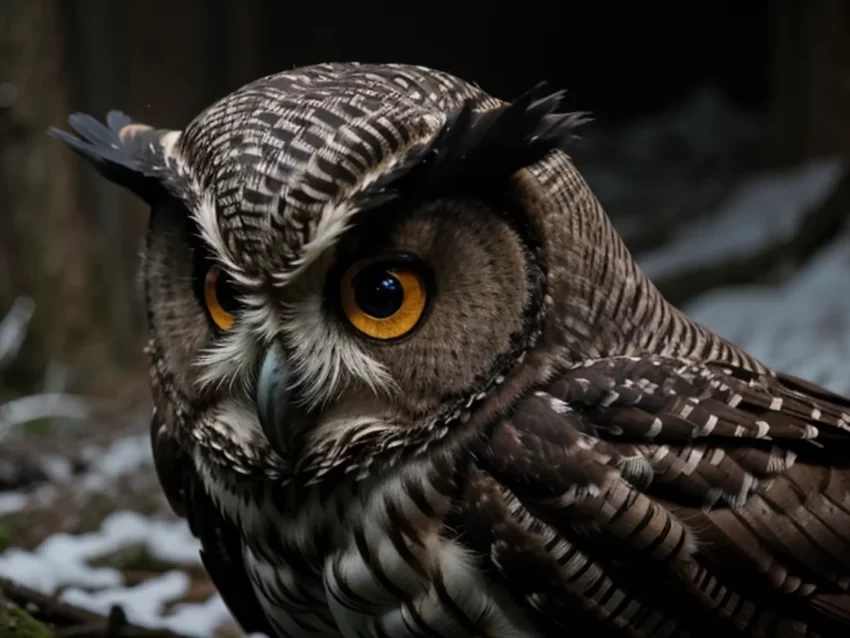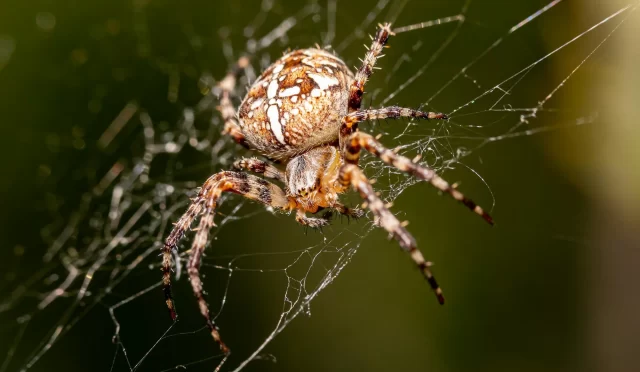Owls have long captivated people’s imaginations with their mysterious charm and enigmatic presence. Among the many owl species living in different ecosystems of the world, the Stygian Owl (Asio stygius) stands out. The Stygian Owl represents nocturnal wildlife and fascinates enthusiasts with its dark plumage and unforgettable gaze.
Physical Characteristics of the Stygian Owl
The Stygian Owl has a striking appearance, characterized by its distinctive features. This owl, which is 40 to 45 centimeters tall and has a wingspan of approximately 95 to 105 centimeters, attracts attention with its imposing presence. Their dark brown plumage, often colored with reddish-brown tones, provides excellent camouflage amidst the dense vegetation of the forest habitat. One of the most notable features of the Stygian Owl is its large, sharp yellow eyes, which play a critical role in night hunting.
Habitat and Distribution
The Stigian Owl is commonly found in the dense forests and woodlands of Central and South America, stretching from Mexico to Argentina. This range covers a variety of habitats, including tropical rainforests, montane forests, and deciduous woodlands. The Stygian Owl (Asio stygius) prefers any area with abundant vegetation where it can roost and hunt in the dark.
Diet
A nocturnal hunter, the Stygian Owl uses its keen senses of vision and hearing to locate prey in the dark. Its diet consists of small mammals such as rodents, bats, and small birds, which it preys on. The Stygian Owl is known for its versatility in hunting techniques, unlike some owl species; It uses both perch hunting and aerial tracking to catch its elusive prey.
Reproduction and Life Cycle
Between February and June, male Stygian Owls stage elaborate courtship displays to attract the attention of potential mates. Once the partners find each other, the female owl chooses a suitable nest site in a hollow tree or abandoned place and lays 2 to 3 eggs there. Both parents share the responsibility of incubating the eggs and caring for the young, which will emerge from the nest in about 5 to 6 weeks.
Conservation Status
Despite their wide distribution, Stygian Owls face numerous threats, including habitat loss, deforestation and illegal hunting. Populations of Stygian Owls are declining in many regions as human activities continue to encroach on their natural habitat. Efforts aimed at protecting and restoring forest habitats are crucial to ensuring the long-term survival of this iconic species.
Interactions with People
Encountering Stygian Owls in the wild is a rare but unforgettable experience for wildlife enthusiasts and bird watchers. Responsible ecotourism practices raise awareness of these magnificent birds while minimizing damage to their natural behavior. By respecting the habitat of Stygian Owls, humans can coexist harmoniously with them.
Myth and Reality
Despite their sinister reputation in folklore, Stygian Owls pose no threat to humans. On the contrary, they play a vital role in maintaining ecosystem balance by controlling rodent populations. Dispelling myths and misconceptions about these birds is crucial to understanding their ecological importance.






